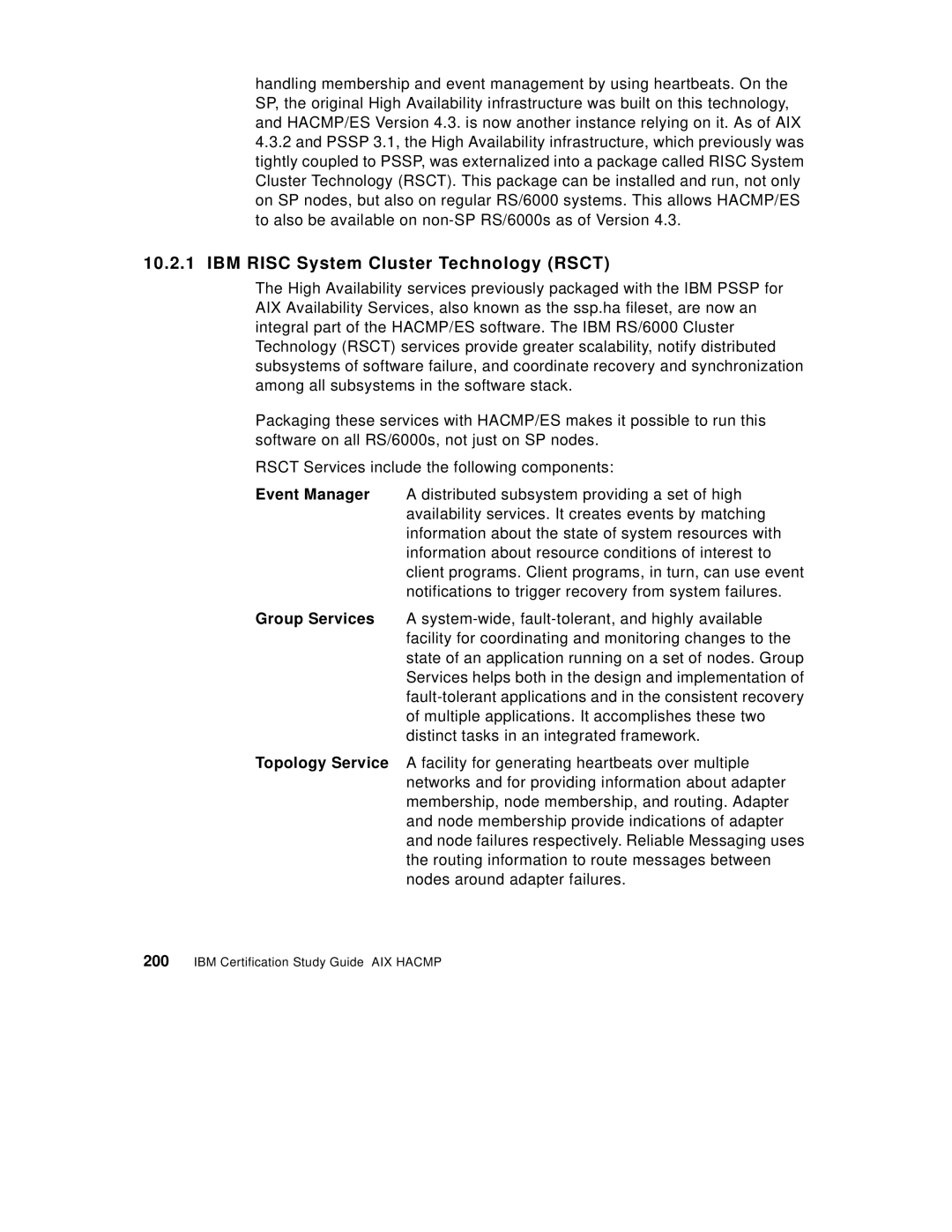handling membership and event management by using heartbeats. On the SP, the original High Availability infrastructure was built on this technology, and HACMP/ES Version 4.3. is now another instance relying on it. As of AIX
4.3.2and PSSP 3.1, the High Availability infrastructure, which previously was tightly coupled to PSSP, was externalized into a package called RISC System Cluster Technology (RSCT). This package can be installed and run, not only on SP nodes, but also on regular RS/6000 systems. This allows HACMP/ES to also be available on
10.2.1IBM RISC System Cluster Technology (RSCT)
The High Availability services previously packaged with the IBM PSSP for AIX Availability Services, also known as the ssp.ha fileset, are now an integral part of the HACMP/ES software. The IBM RS/6000 Cluster Technology (RSCT) services provide greater scalability, notify distributed subsystems of software failure, and coordinate recovery and synchronization among all subsystems in the software stack.
Packaging these services with HACMP/ES makes it possible to run this software on all RS/6000s, not just on SP nodes.
RSCT Services include the following components:
Event Manager A distributed subsystem providing a set of high availability services. It creates events by matching information about the state of system resources with information about resource conditions of interest to client programs. Client programs, in turn, can use event notifications to trigger recovery from system failures.
Group Services A
Topology Service A facility for generating heartbeats over multiple networks and for providing information about adapter membership, node membership, and routing. Adapter and node membership provide indications of adapter and node failures respectively. Reliable Messaging uses the routing information to route messages between nodes around adapter failures.
